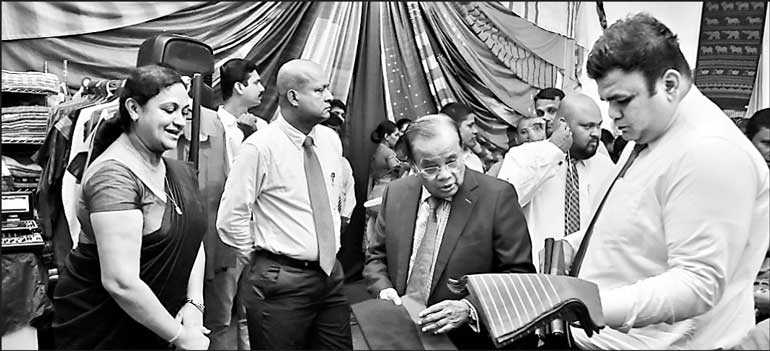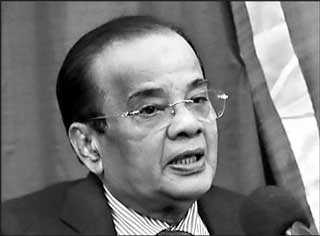Monday Dec 08, 2025
Monday Dec 08, 2025
Saturday, 12 October 2019 00:00 - - {{hitsCtrl.values.hits}}

Western Province Governor A.J.M. Muzammil inaugurated the ‘Peladiga Salu 2019’ – Handloom Expo at the Lionel Wendt Hall in Colombo last week.
 |
Western Province Governor
|
Chief Secretary Pradeep Yasaratne and Department of Industries Director General L.A.S Ranganie were also present at the event.
Muzammil pointed out that President Maithripala Sirisena had done his best to improve the small and medium sized industries to boost local production despite his restricted powers. In spite of several challenges, he said the President was keen on helping the local handloom producers to encourage their entrepreneurship.
“Our local products are very popular among the foreign tourists who visit Sri Lanka by way of their quality,” the Governor said, pointing out that an extended support from the Government would help both the country and the producers to develop their respective businesses. The Governor said such support from the Government for local industries would also help boost the economy of the country and further reduce imports by cutting down on foreign exchange that goes out of the country. Sri Lanka’s handloom textile industry is centuries old. The industry has helped showcase the undying creativity of generations of Sri Lankans taking them to the international arena. A range of designs and colours, individual and innovative designs, craftsmanship, colour combination and patterns are handed down from generation to generation.
Handloom textile industry is a highly labour-intensive export-oriented rural-based industry in Sri Lanka. The industry produces predominantly cotton and silk products, utilising cotton and silk yarn. Generally, with low capital costs and running expenses, handloom is a household or cottage industry, where skilled hands create value-added products. Another feature is that the industry has the flexibility to supply both in small quantities and in larger quantities as well as styles to fit individual tastes and requirements of different buyers from various cultures. There is immense potential for use of alternative raw materials, abundantly available in Sri Lanka.